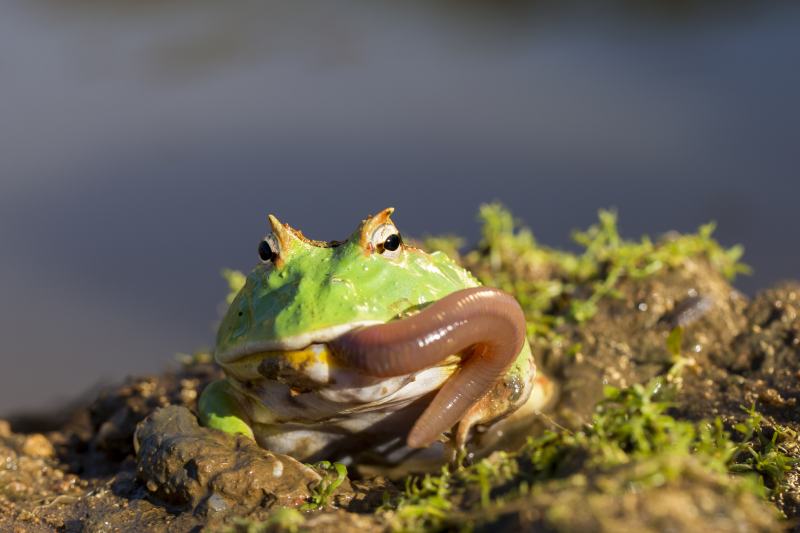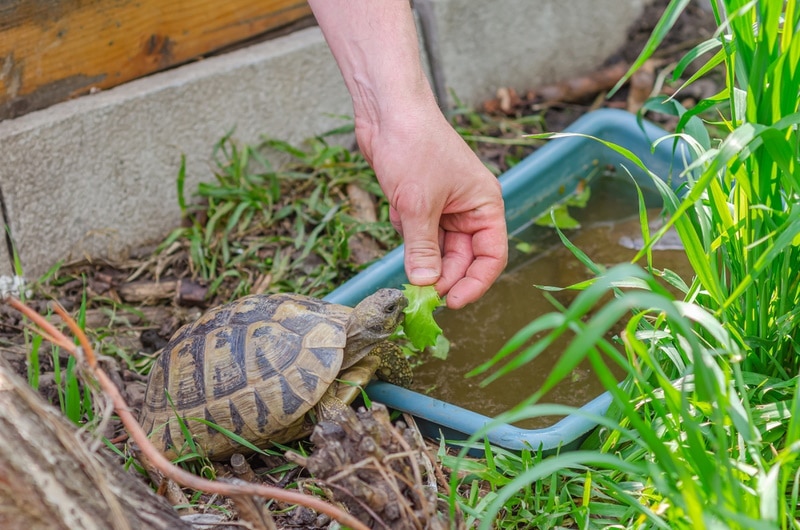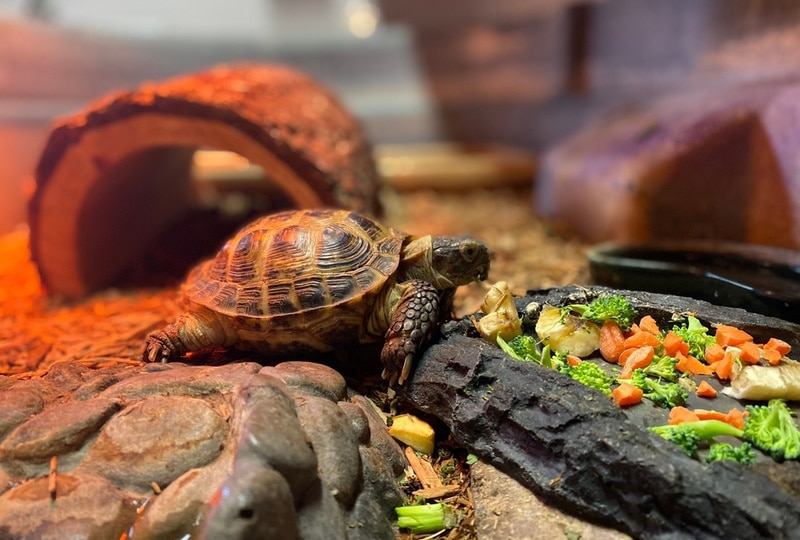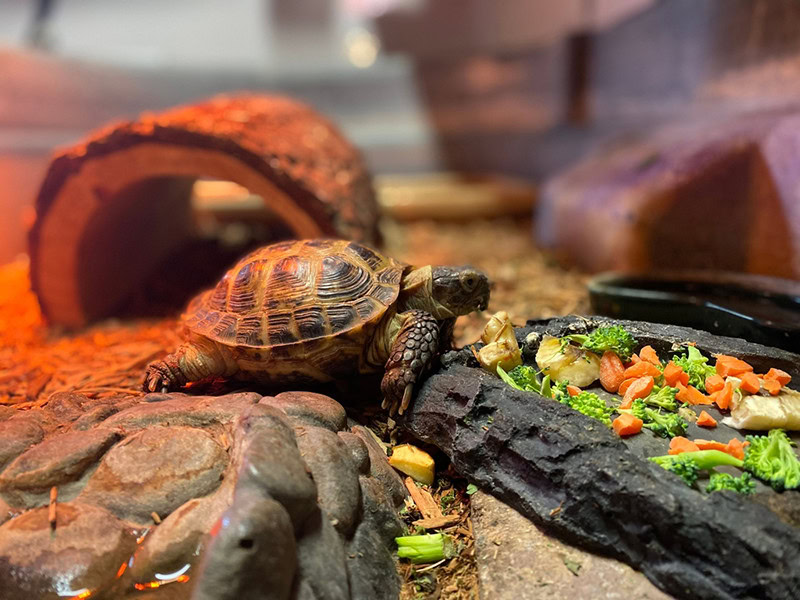Can Frogs and Turtles Live Together? Risks & Considerations
By Jordyn Alger
Updated on

Click to Skip Ahead
Housing frogs and turtles can take up a lot of space, and their enclosures need to be large enough to provide your pets with ample space. Sometimes, it can feel like you’re organizing your entire house around these pet enclosures. Wouldn’t it be much easier if you could house your frog and turtle in the same space? Unfortunately, it isn’t that simple.
While some pet owners house their frogs and turtles together, it isn’t always advised to have frogs and turtles living together. Frogs and turtles technically can cohabitate peacefully under very specific circumstances, but no matter how many precautions are taken, there will always be a risk of injury or worse when housing these pets together. Keep reading below to learn more about the risks of housing your frog and your turtle.
Risks of Housing Frogs and Turtles Together
As bizarre as it sounds, one of the main risks of housing a frog and a turtle together is the possibility that they may try to eat each other. Most pet turtles are omnivorous, meaning they eat plants and animals, while most pet frogs are carnivorous, meaning they strictly eat animals. Therefore, your frog and your turtle may see each other as prey, especially if one is much larger.
The idea of a turtle eating a frog may be somewhat understandable, but the image of a frog eating a turtle may be difficult to fathom. However, it is definitely possible. Many frog species are optimistic eaters and will attempt to swallow nearly anything they see, including animals larger than themselves. A prime example of this is the American Bullfrog, which has been observed swallowing turtles whole.
Even if your pet frog and pet turtle do not attempt to eat each other, they may still be hostile toward one another, which could lead to fighting and injuries. Therefore, in most cases, housing a frog and a turtle together is highly discouraged.

Habitat Requirements May Make Your Turtle and Frog Incompatible
Your frog’s and turtle’s species will dictate the living conditions they need. While some frog and turtle species may be well-suited to share a habitat due to similar living needs, many other species may be incompatible.
For example, the average pet turtle requires an enclosure of around 60–120 gallons. Many frogs would benefit from a similarly sized enclosure, but some species (such as the White’s Tree Frog) require more vertical space than horizontal due to natural climbing behaviors. Turtles do not require as much vertical space but need sufficient horizontal space. If you were to house two such animals together, the required enclosure would need to be massive. While this is technically possible, you must ensure that your home has suitable space to accommodate such an enclosure.
Understanding the specific needs of your frog and turtle will help you determine whether their habitat needs are compatible. If you are unsure about the species of your pets, you should consult your vet for advice. From there, your vet can explain the specific habitat needs of each animal and can help you decide whether your pets can comfortably share a living space.
Certain Turtle Substrates May Pose a Risk to Frogs
Another concern with housing frogs and turtles together is the possibility that your turtle’s substrate may cause harm to your frog. For the most part, frogs and turtles share substrate needs. These include topsoil, coconut husk, and other biodegradable, natural materials.
In an aquatic turtle’s enclosure, river rocks are recommended to be used as substrate in the aquatic portion of the enclosure. However, rocks are not recommended in a frog’s enclosure since many species can and will swallow the rocks, no matter how large they are. This can cause serious health issues for your pet frog and may even lead to death. Because of the high risks, it is vital that you are cautious about the substrate you use in a shared enclosure.
Dietary Differences May Pose a Risk to Your Pets
Another potential risk is how one pet’s diet may affect the other. A typical, omnivorous pet turtle will eat commercial pellets, animal material, leafy greens, mixed vegetables, and the occasional fruit. These components are necessary for a healthy, happy turtle’s diet.
However, most frogs cannot eat any human food whatsoever. This includes the leafy greens, mixed veggies, and fruits essential to your turtle’s diet. If these food items are placed in the enclosure for your turtle to eat, your frog may eat them instead. This can lead to nutritional diseases, such as metabolic bone disease, renal oxalosis, and more.
Regarding the food items that both pets can eat, such as insects, there is a chance that your frog and turtle will compete over their meals. This can lead to fighting, injuries, or worse.

While there are many potential risks to housing a frog and turtle together, it is not entirely impossible. However, it takes extreme care and caution. Likewise, you must also be willing to accept the possibility that something will go wrong.
The safest way to house a frog and turtle is to find two species that share similar habitat needs while being unlikely to eat each other. If your pet frog and pet turtle are roughly the same size, it may deter them from trying to eat one another; however, it is not guaranteed.
Ultimately, the best way to determine what is right for your pets is to research the specific species you own and consult your vet. You can make the most informed decision for your pets with the information you gather.
Final Thoughts
It is not easy to tell whether or not a frog and a turtle can be housed together safely. While many frogs and turtles share similar habitat needs, some notable differences can make cohabitation a challenge. In addition, your frog and turtle may feel threatened by each other’s presence and may try to harm or even consume the other. For these reasons, housing a frog and turtle together is not advised in all situations; instead, it should be considered on a case-by-case basis.
Featured Image Credit: Yulia 0606,Shutterstock











